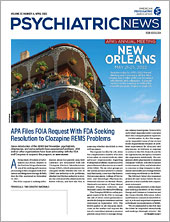One of the most important components of patient care is documentation. Documentation in the medical record is the only contemporaneously kept legal document that details the course of a patient’s care. Thorough, accurate, and timely documentation serves as a communication tool to coordinate patient care, justify reimbursement for services, and is often used for defense in legal or regulatory matters.
Documentation of every patient encounter is essential. Failure to be thorough, timely, and accurate may be indicative that care was rushed, careless, or incomplete. Also, it is important to understand and follow professional association documentation guidelines along with state and federal regulations. Remember that “if it was not documented, it was not done.”
Maintaining the integrity of the patient record is strong evidence used in any defense. Be objective as you describe patients’ behavior and actions, and use phrases such as “patient states” or quotations. Ideally, documentation should be completed within 48 hours after a patient encounter while the details and events are still fresh and clear.
What Should Document Include?
•
Details of each encounter, reason for visit, and patient treatment plan.
•
Consent(s) for treatment, informed consent, electronic communication, and other related information.
•
Suicide and violence assessment.
•
Medication issues, warnings, and changes.
•
Commonly approved abbreviations.
•
Missed and rescheduled appointments/noncompliance.
•
Boundary and termination conversations.
•
Orders, effectiveness of treatment, and follow-up.
•
Any conversations by text, email, and phone and actions taken.
•
Recommended follow-up/plan for next visit.
How to Document Changes in a Record
•
Ensure all changes are clearly labeled and justified accordingly.
•
For paper records, strike through the original entry with a single line; date, time, and initial any changes.
•
Never delete or otherwise remove the original text.
What to Avoid in Your Documentation
Avoid late entries, if possible. However, if a late entry is required, note the reason for the delay. Always include date, time, and initials. Also, avoid the following:
•
Vague descriptions or explanations.
•
Any documentation related to “contacting your insurer, risk manager, or malpractice defense attorney.”
•
Personal comments about patient and/or family members.
•
Copying and pasting as this can result in repeating the wrong information.
•
Use of templates should be used sparingly as irrelevant information may populate fields
A succinct medical record with accurate information based on facts and observations is recognized as best practice. The medical record should tell a story and be easily understood. A logical, clear thought process reduces the chance of misinterpretation during a legal or regulatory proceeding. Plaintiff attorneys comb through records to find “holes” in patient records and look for breaches to the standard of care. A well-organized, written medical record enhances credibility and is the best strategy to mitigating risk and defending a malpractice claim. Taking proactive steps in your documentation will protect you in the event of a lawsuit or licensing board complaint. ■
This information is provided as a risk management resource for Allied World policyholders and should not be construed as legal or clinical advice. This material may not be reproduced or distributed without the express, written permission of Allied World Assurance Company Holdings, Ltd, a Fairfax company (“Allied World”). Risk management services are provided by or arranged through AWAC Services Company, a member company of Allied World. © 2022 Allied World Assurance Company Holdings, Ltd. All Rights Reserved.

